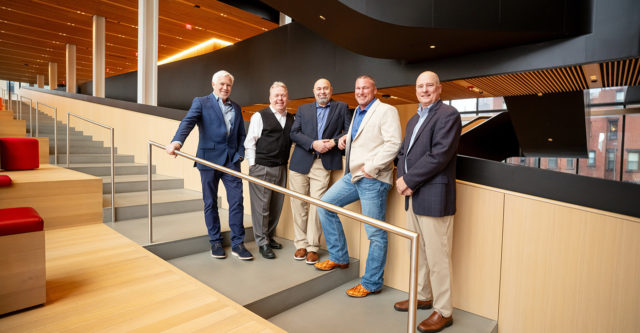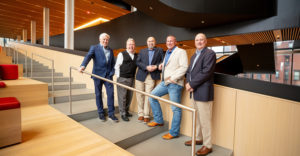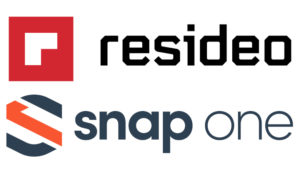
Boston University (BU) — founded in 1839 — is a world-leading private research university spanning three primary campuses (Charles River, Medical & Fenway) that occupies 15.6 million gross square feet of space in over 370 buildings in the City of Boston and Town of Brookline. Additionally, the university has properties outside of Boston and Brookline for academic initiatives and global programs, domestically and internationally. There are 17 schools and colleges under the BU umbrella that contain a community of over 10,000 employees and a student body of more than 37,000.
A campus of this size — with this many people coming and going — has the potential to generate a substantial amount of access data. It also requires a high level of access control efficiency.
“BU is an enormous and thriving organization that serves and houses thousands of students, professors and staff in the heart of our region’s most iconic city,” says Bill Kotwicki, vice president of business development, Minuteman Security and Life Safety, Andover, MA.
2024 Project of the Year

Company: Minuteman Security Technologies (Minuteman Security and Life Safety)
Customer: Boston University
Scope of project: To combine 23 standalone outdated access control systems into a single enterprise system for the university.
Project launch: April 2021
Project completion: November 2023
Luigi Martiniello began his current role as director of security infrastructure and support services operations at BU in February 2019. Shortly after, he took note of the current state of BU’s access control system. As it stood, BU had 23 standalone Software House C•CURE 800 systems — an outdated software that has since been replaced with C•CURE 9000.
“When Luigi arrived there, he began analyzing what systems and technologies were in place and establishing a budget for making sure those were up to date and modern,” says Joseph Lynch, CEO, Minuteman Security and Life Safety. “He found that they had 23 different systems — 23 independent instances of Software House C•CURE 800. None of the databases talked to each other. Everything was separate. You would have to go over to every individual system within the university to add or delete a card holder. That was the first serious issue they had.”
Martiniello and his team identified the limited level of control and oversight, and the need for real-time access management as specific pain points. After review of then current operating processes and protocols, the university decided to stay with Software House, but he wanted the university’s access control solution to be one system. And in 2020, the university chose Minuteman Security Technologies Inc. to integrate the project.
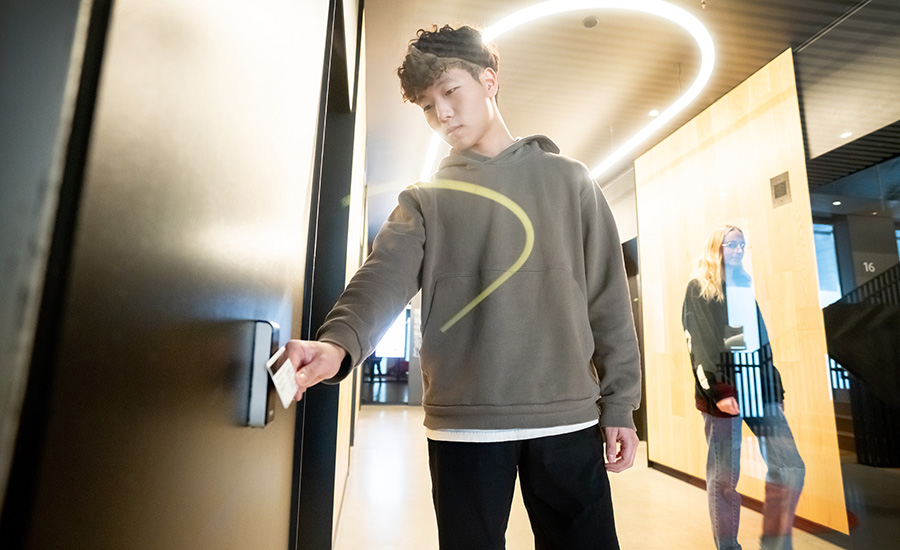
“Our purpose is to provide enterprise security system technology solutions — including custom design, installation, development and support services — to our customers,” Kotwicki says. “We specialize in a diverse range of advanced security management systems for a broad range of enterprise clients. As an industry-leading security systems integrator, we partner with the best-of-class manufacturers to design, install and maintain complex security solutions for our customers.”
BU’s expansive campus and large community of students and faculty demanded that Minuteman complete their integration with almost no downtime of the access control system. Ultimately, Minuteman taking BU’s 23 disparate and outdated Software House C•CURE 800 systems and combining them into one enterprise level C•CURE 9000 system — with no major downtime — and in the process becoming the university’s new security integrator of choice makes them SDM’s choice for the 2024 Project of the Year.
The Solution
BU’s desired outcome was to combine those 23 disparate systems into an enterprise system. This included setting up a master application server (MAS) and three satellite application servers (SAS). Software House’s C•CURE 9000 offers scalable access control architecture that provides security and IT managers with control over the entire system, while allowing each facility to have independent control of its individual operation. It is one of Minuteman’s preferred solutions.
“We have a very good relationship with Software House,” Lynch says. “We’re one of the largest Software House dealers in New England. We’re a substantial dealer in Southwestern Florida, and we’re also growing in additional territories. We have two master certified Software House technicians. There’s only a handful in the world, with Joshua being one of them.”
Josh Scholl, vice president, applications/engineering, Minuteman Security and Life Safety, has been with the company since 2012. “I’m one of 32 or 33 master technicians for Software House in the world,” Scholl says. “That was part of Boston University’s criteria, that there was a master tech on the job. I’ve been in the industry for about 25 years and I’ve been working on Software House for about 20 of it.”
Even with a Software House master tech on the project, the scale of consolidating BU’s multiple access control systems into one presented potential complications — especially considering that they could not allow any significant downtime.
“I’m most proud of the fact that we were able to complete the project without impacting an organization with 24/7 operations,” Kotwicki says. “There are folks there who — understandably — have no tolerance for disruption of their normal day-to-day operations. There are professors that need access to labs, the president needs access to his office, and so on.”
Minuteman Security Technologies (Minuteman Security and Life Safety) is headquartered in Andover, MA, and was founded in 1988 by current CEO Joe Lynch.
“I started as a teenager in the burglar alarm business,” Lynch says. “I worked with burglar alarms and small fire alarms in high-end residential and retail banking. And then in the late ’80s, I started Minuteman.”
Minuteman is a leading provider of enterprise security technology solutions. Its security systems are used by a wide range of organizations throughout the United States. The integrator serves customers in law enforcement, energy companies, mass transit, large retail chains, academic institutions, public safety agencies, and community hospitals with regional offices ranging from the Northeast to the Southeast, with recent presence in the Mid-Atlantic and Central United States.
“We have nine offices throughout New England,” Lynch says. “Today, we’re up and down the Eastern Seaboard, close to 250 employees. And we’re covering about 19 states.”
Bill Kotwicki, vice president of business development, Minuteman Security and Life Safety, says, “I’ve been with Minuteman for six years now. Our relationship started on the manufacturing side — they were one of my customers. At the time, I thought Minuteman was the only integrator that I’d consider working for because they’re just that good.”
Minuteman ranked No. 17 on the 2023 SDM Top Systems Integrator Report.
At the same time, Minuteman was also upgrading all of BU’s panels. For this, all the panels had to be reprogrammed in the system, and access had to be updated and cleaned up at the same time. Minuteman also integrated a feed from BU’s mainframe to add and keep up with all its personnel records, which exceed 300,000.
“I held all the programming duties, like making sure that the data that was coming in correctly, that the integrations between their student systems, and the feeds were coming properly,” Scholl says. “There was a lot of talk back and forth about how to set the system up. When you partition a system, essentially you are creating two separate systems and only the person that is in that partition can see the information that’s in that partition. And then you have an overall administrator of all the partitions that can see everything.”
Scholl continues, “You make the personnel global so that they can be seen in any of the systems. And then the clearances — what doors they can get into and what schedules — is all done at what we call the local level or the partition level. Essentially what we did is we took those 23 systems and we put them into one mainframe system, but we still separated out all 23 systems so that they could be managed.”
The project also featured the installation of Milestone’s video management system (VMS) XProtect, as well as between 2,500 and 3,000 Axis cameras of varying types. Kotwicki says he appreciates Milestone’s seamless integration and that Minuteman has a very close relationship with Axis. Minuteman also installed a handful of Torus electronic key boxes, a relative new-comer to the industry but one that offers many remote management quality-of-life features, Kotwicki says.
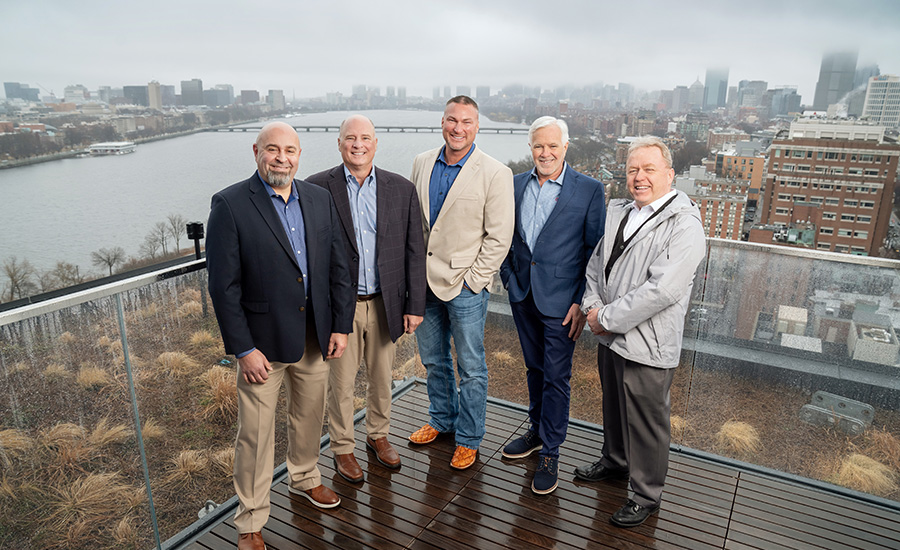
The Process
There were quite a few steps in the integration of the new C•CURE 9000. First, Minuteman configured a new global personal data feed provided by BU, aligned via a unique identifier with existing 800 systems, and migrated that into a MAS. This included coordinating an extract, transform and load process with BU for defined ingestion of delta changes to personal records.
Initially, Minuteman had to pull 23 standalone outdated systems into one enterprise environment. The integrator says there was a lot of massaging data to weed out the duplicate information.
The second large undertaking was to bring the standalone housing systems into the enterprise environment. This was substantial due to the coordination of minimizing downtime and holding to a tight schedule window.
Lynch says the biggest challenge of the project was recreating the database. “That was a very heavy lift,” he says. “We had to make sure that all issued access for staff, students and faculty were accurate before we began the implementation process. That’s the most difficult part of all of this.”
Lynch continues, “It’s now a C•CURE 9000 MAS SAS environment, so it’s got redundancy. Then one by one, we brought the biggest systems over into one cohesive ecosystem. We had to merge and clean up all the databases of folks that had access, what they had access to, and whether they belong there or not.”
Minuteman also standardized all of BU’s field access control panels to iStar Ultra panels. This included upgrading all existing apC, apC/8x, iStar Classic and iStar Pro panels to iStar Ultra SE panels. As well, Minuteman upgraded their legacy I/O boards star coupler to I/8 and R/8 I/O boards of required quantity.
All of the panels serving systems to be migrated using the migration tools were upgraded while the systems were running C•CURE 800; the remainder were upgraded and configured/programmed directly into C•CURE 9000. As part of the panel upgrades, Minuteman and BU had to rename all panels, readers, doors, inputs, outputs, events, and other remaining objects to match the new naming convention used by BU.
As part of this migration, the administrative structure of the C•CURE environment needed to be centralized. The BU security group became the global administrators of the system, and the BU Police Department became the global monitors. Privileged groups then limited individual departments and schools’ access coordinators to manage doors and system objects within their area of responsibility and made sure that they did not have any visibility to other objects within the enterprise. Minuteman and BU limited access coordinator’s privileges to their individual areas.
“We have a deep engineering and technical staff with expertise in everything from networking, to programming, to installing,” Lynch says. “You have to have a full breadth of experience on a team like that to be able to support a project of this nature.”
During the project, Minuteman also encrypted all the hardware to make sure the communication between servers and panels was as secure as possible. Minuteman worked closely with the server and network teams at BU to ensure the server environment was as secure as possible. Minuteman has a separate web server running any web activity within the system.
Currently, Minuteman supports access control, video surveillance, intrusion detection, and emergency communications for BU.
Among the many great entries we received for the 2024 SDM Project of the Year, we selected the top three. The other two top projects and integrators were:
Company: Preferred Technologies
Customer: Trinity Metro Mass Transit Bus
Scope of project: To provide a turnkey solution consisting of Genetec Transit Plugin with Axis Cameras for 181 Trinity Metro transit vehicles ranging from 40 ft. to 60 ft. buses to smaller paratransit min-mover vehicles. The project also called for the development of a transit and military rated uninterruptible power supply (UPS) to alleviate the customers pain point of loss of video upon vehicle impact.
Project launch: November 2022
Project completion: May 2024 (Projected)
Company: 4S Security
Customer: Willis Tower
Scope of project: To convert all security systems at the Willis Tower including more than 1,000 access control panels, 800 monitoring points, over 500 cameras with 850 views, seven video management servers, over 100 custom alarm rules, custom-built elevator flow management software, network configuration with over 100 managed switches, cybersecurity testing, and LiDAR detection.
Project launch: December 2022
Project completion: December 2023
The Relationship
BU’s Software House C•CURE upgrade was the first project completed with Minuteman. The project launched in April of 2021 and took approximately two-and-a-half years to complete. Since the project, Minuteman has become BU’s primary security integrator.
“Our team has been with Luigi and his team all along the way, upgrading all these various systems, as well as integrating other solutions like turnstiles and so on,” Lynch says. “There’s been a lot of additional capabilities that we’ve helped him with as we’ve moved forward. Luigi relies on us as a consultant for system selection and design as much as he relies on us as the actual integrator and service company, which we do every day.”
Lynch also says he was involved throughout the entire process. “I was involved with BU from the beginning — through the sales process, through the design process and through the project management process,” he says. “I was very hands-on. After the project was well underway, I stayed involved at an executive level to make sure that the project stayed on track and had regular quarterly meetings with Luigi and the rest of my team to make sure that our client was being taken care of.”
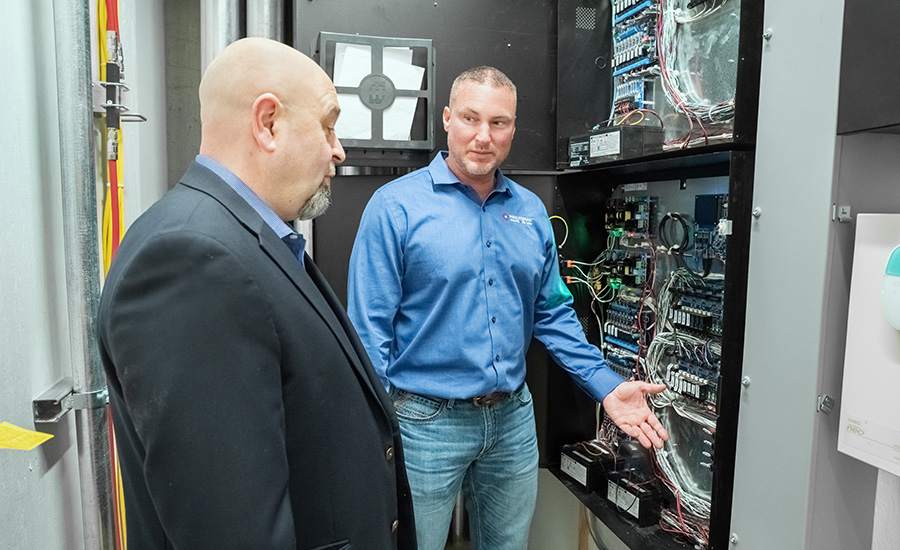
Kotwicki expressed a similar sentiment. “We worked very well with the project management team,” he says. “The project went off without a hitch thanks to our relationship with BU.”
As for working with the integrator, Martiniello says. “Working with Minuteman was excellent.”
“It all starts with the relationship we have developed through this project,” Martiniello continues. “Our integrator understood our university’s mission, and was supportive and responsive to the project demands and timelines. Minuteman was very professional while working with our internal stakeholders to develop the Software House C•CURE 9000 product. They helped us transition from a standard concept security system, to an enterprise level security system with a host of identity integrations from our trusted sources in IT.”
Currently, Minuteman also has three to four embedded technicians onsite at BU and a full-time project manager. “Obviously the project went very well,” Scholl says. “It went very smoothly as far as what they were looking for and what they got. We didn’t really have any hiccups. There weren’t any outages or anything other than what was planned and scheduled. Now, we have multiple techs on site daily. We are their sole security integrator. I’m probably on three or four calls a week with them.”
Martiniello says, “The relationship has led to the development of an internal security services group that renders continuous service to the centralized C•CURE 9000 system — an integrated, centrally supported system that has made significant improvement in managing access to spaces across the portfolio.”
Kotwicki says, “We were honored to have the opportunity to partner with BU, and above all we are proud of the work we accomplished for them on this project. We met all our project goals on time, on budget, and at a minimum of disruption to this incredibly busy community. The result is a system that has streamlined and improved BU’s operational security and safety and provides tremendous peace of mind to this most valuable partner.”
The Future
Minuteman says there have been — and will be — many additions and updates to the various security technologies on BU’s campus. This includes BU’s Center for Computing & Data Sciences. Opened in 2022, the building is an architectural marvel affectionately nicknamed the “Jenga building” because of its striking appearance. It is 19-stories, 345,000 sq. ft., and it houses the university’s departments of mathematics & statistic computer science — the Rafik B. Hariri Institute for Computing and Computational Science & Engineering. Most impressive, it is a LEED platinum certified building. BU uses a closed-loop geothermal well system to provide heating and cooling to the building, exterior shades mitigate solar heat gain, and the building was constructed using sealants and finishes that have few or no volatile organic compounds (VOCs) to promote interior air quality.
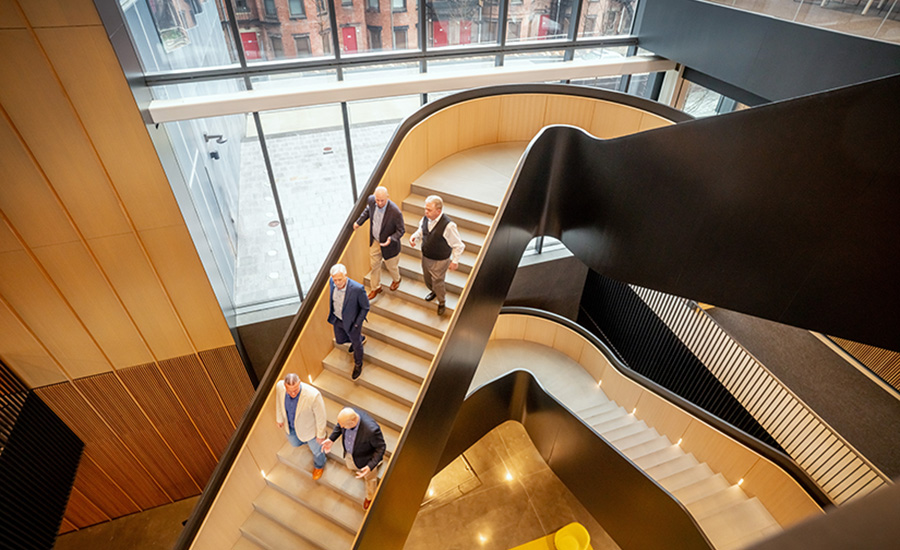
Minuteman will continue to install cameras, readers, intercoms, and electronic key boxes, among other things as needed. The integrator also says it is looking into technology like weapons detection and aggression detection software.
“We support BU,” Lynch says. “Our goal is to make sure that they’re protected. We want to make sure they have the most up to date systems and that they get the services support on a daily basis they need. We deliver that for them.”
As for their current relationship, Martiniello says, “Minuteman has been an integrator with sound service and installation, with an ability to pivot in situations to provide the best solution to BU, and it has made sound security technology recommendations that provide a safe environment to our students.”
Kotwicki says Minuteman owes its success to relationships like the one it has with BU. “We’ve sustained unprecedented growth — even throughout the pandemic. We owe our success to our relationships with our clients — like BU — and I’m proud that our success allows us to continue those relationships.”
“We’re quite proud of the size and scope of the project and our ability to support them at the level we do,” Lynch says. “It makes them happy; it makes us happy. It’s a challenge, but it’s one that we all enjoy and one that we live for every day.”
